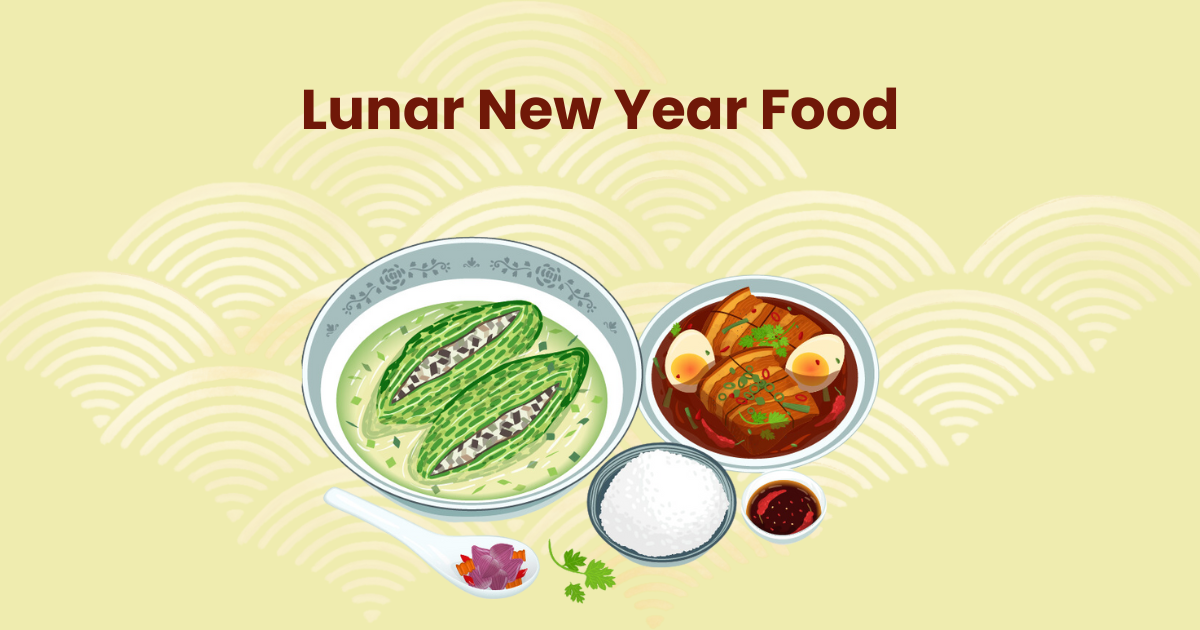Lunar New Year is the most significant celebration of the year in various Asian countries. It holds multiple meanings, marking the end of the lunar calendar cycle and serving as a special occasion for family reunions, wishing for a prosperous and fulfilling year. This cultural heritage is also a unique intangible cultural asset that is globally respected and embraced.
During these days, Asian families often prepare Lunar New Year food traditions with special meanings. Asian cuisine is known for its unique flavours and intricate preparation methods. The ingredients used also differ significantly from traditional Western dishes. Let’s explore the traditional Tet cuisine of some countries around the world.
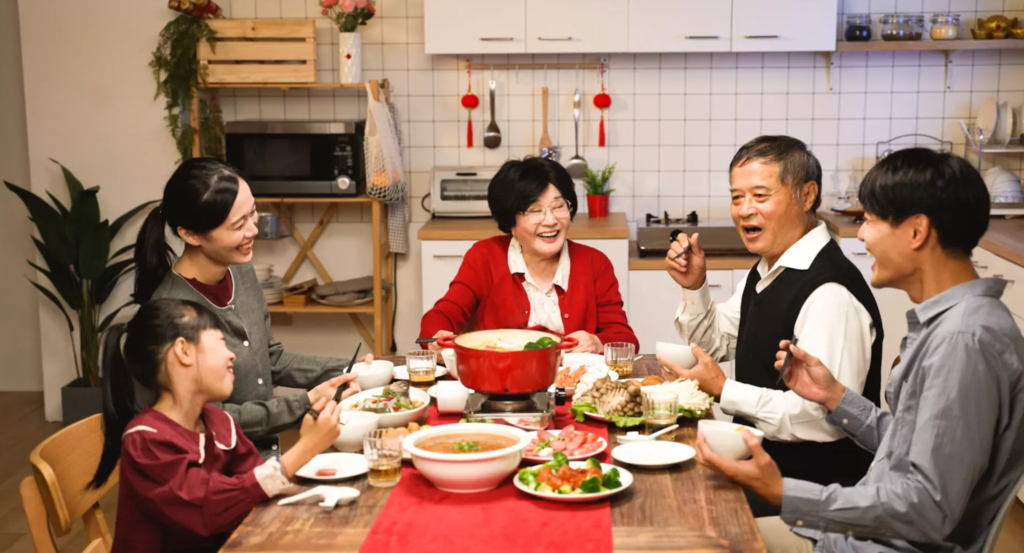
1. “Square Sticky Rice Cake” – Vietnam
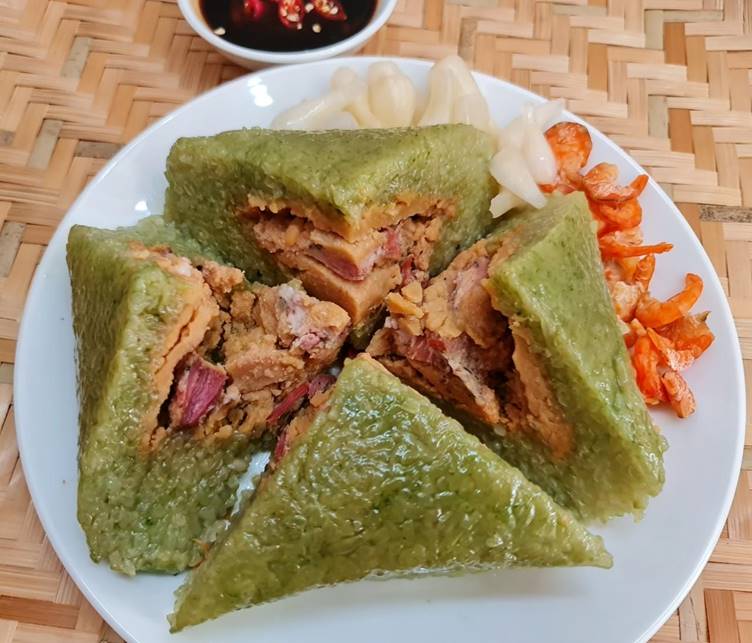
“Bánh chưng” or ‘Square Sticky Rice Cake” is one of the primary Lunar New Year food traditions of Vietnam, representing the agricultural civilization based on rice cultivation. The ingredients for making this cake include sticky rice, beans, pork, and banana leaves or phrynium. This savoury dish is an indispensable part of Vietnamese families during the Tet holiday. It symbolises the fertile land and has a history spanning thousands of years.
The dish is infused with the aromatic fragrance of leaves, complemented by the delicious flavours of mung beans and slow-cooked pork. The process of wrapping and cooking the square sticky rice cake for many hours, often overnight, is also an interesting activity for every Vietnamese family during the Lunar New Year.
2. Tteokguk – South Korea

South Korea is also famous for its unique Lunar New Year Food Traditions. People often consume Tteokguk on the first day of the new year, hoping for wealth and prosperity throughout the coming year. The ingredients for this dish are readily available throughout the country and include beef, seaweed, and dried fish. The rice cakes, shaped like coins, are believed to bring good luck to those who enjoy them.
3. Dumplings – China
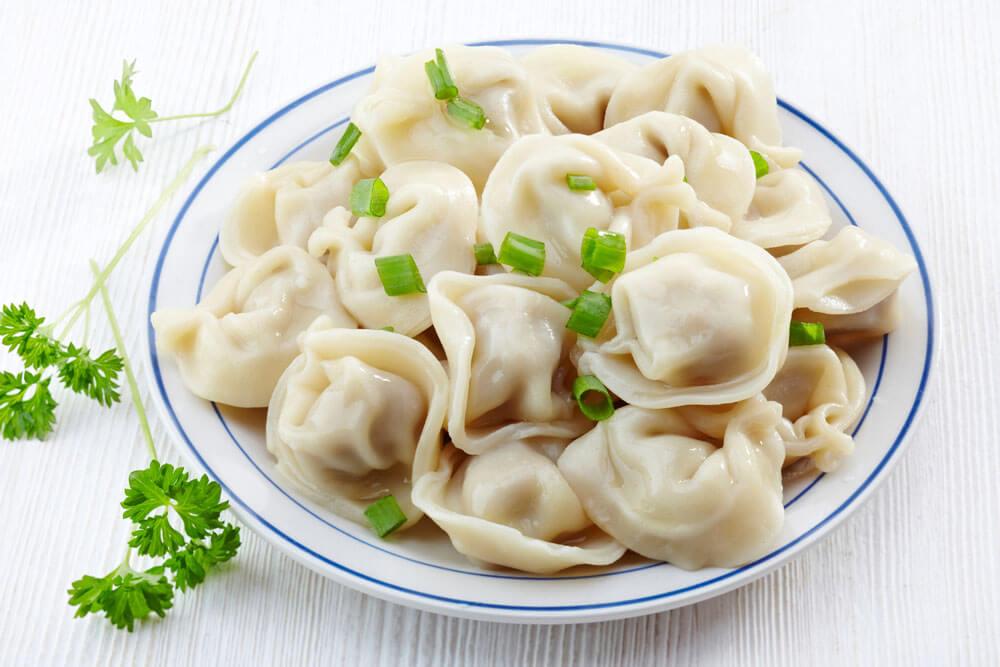
Lunar New Year Food Traditions in China are also worth trying. This Chinese New Year dish has a history of over 1800 years, and Dumplings are a prominent delicacy during this festive season. Chinese people consume this dish most commonly during the family reunion dinner on New Year’s Eve and the first day of the new year.
Dumplings are believed to bring luck and prosperity. The shape of the dumplings resembles gold ingots. Additionally, the pronunciation of Dumplings is similar to “Jiaozi,” an ancient Chinese currency, emphasising its significance in bringing wealth.
When making the dumplings, the person preparing them may secretly include a strand of thread (symbolising longevity) or a coin (symbolising wealth) within the dumpling filling.
4. Nian Gao – China
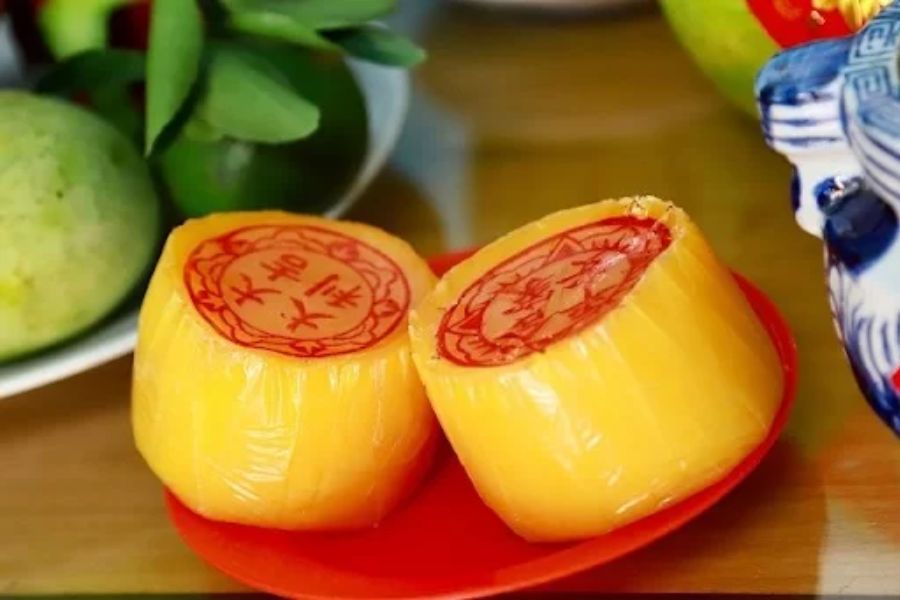
Nian Gao cakes, common Lunar New Year foods, consist of two main ingredients: sticky rice flour, red beans, and sugar. Some variations may include black sesame seeds or ginger. These delicious cakes are commonly consumed during the Chinese New Year. The popularity of these Lunar New Year food traditions has extended to neighbouring countries such as Vietnam and Malaysia, where it is also enjoyed during their Lunar New Year celebrations. The name “Nian Gao” is synonymous with “each year better.”
The term “Nian Cao” in Chinese is homophonous with “a higher new year,” signifying continuous improvement and development in the coming year. Eating this cake is believed to bring personal improvement and better fortune in the new year.
This traditional Chinese New Year dish is also a common gift during the Chinese New Year, symbolising wishes for prosperity and abundant success in the upcoming year.
You May Also Like:
- 5 Fun Chinese New Year Activities For 2024
- 7+ Lunar New Year Food Traditions Around Asia
5. Whole Chicken – Malaysia
Lunar New Year food traditions in Malaysia are also so special. Chickens are highly favoured during the Lunar New Year celebrations in Malaysia. Chicken is also widely featured in Chinese New Year meals. In the past, chicken was considered a luxurious food item, and people would typically indulge in it only when the entire family was present. Therefore, a feast with chicken meat signifies a family reunion and suggests the family’s affluence.
6. Fish – Singapore
With a cultural influence closely tied to China and neighbouring Malaysia, Singapore’s Tet cuisine is diverse and rich. Fish is a common Lunar New Year food tradition, with a meaning of good luck Chinese New Year food.
The symbolic significance of fish represents abundance and prosperity in the new year. Due to this meaningful connotation, fish dishes are highly popular in Singapore, especially among those involved in business.
One distinctive fish dish in Singapore is “Lo hei” or “yusheng.” This salmon salad comes with 27 types of vegetables and a special sauce. The act of tossing and mixing the ingredients, known as “Lo hei,” signifies prosperity and success in business. This dish is especially popular during the Lunar New Year celebrations in Singapore.
7. Tikoy – Philippines

This sweet rice cookie is a distinctive feature of Philippine Lunar New Year food traditions. Known as Tikoy or sweet rice cookies, these cookies are made from sticky rice and lard mixed with chicken eggs and then fried. This Classic Lunar New Year Dish, made from simple ingredients, symbolises luck, happiness, and the wish for family togetherness during the Lunar New Year.
8. Kagami mochi – Japan
Kagami mochi is a good luck food for the Lunar New Year in Japan, symbolising good fortune, a bountiful harvest, and a fulfilling life. The arrangement of these mochi cakes carries significance: two cakes stacked on top of each other, resembling continuous good luck and completeness in all things.
The term “Kagami” also means reflection (Kagemaru), as if looking back at oneself over the past year.
Key Takeaways
Most traditional foods for the Lunar New Year often have simple preparations but carry profound spiritual meanings. When enjoying them, it’s worthwhile to explore their history and significance to fully appreciate the atmosphere of Asian New Year celebrations.
💡How to host a meaningful and engaging Lunar New Year through a phone if you are abroad? Grab more inspirations and ideas with AhaSlides now! It is the Pickanevent editor’s choice for the best virtual tool to host a virtual game night with your friends and family.
More tips and advice about events? Pick an event that you’re concerned with, and we’ll give you a helping hand!
FAQs
What are the popular traditional Lunar New Year activities in Asia?
New Year Visit: In all Asian countries, it is customary to visit homes, spend time together, and exchange good wishes during the New Year. This tradition fosters a sense of warmth and happiness in welcoming the new year.
Couplets: In countries using or having used the Sino-Tibetan language family (such as China, and Vietnam), there is a tradition of hanging couplets in front of homes or living rooms. These couplets contain well-wishing words that bring luck to the household.
Traditional Attire: On this day, people dress in their finest attire to welcome the new and auspicious. Therefore, traditional clothing is worn to symbolise the best and showcase prosperity and beauty, reflecting the belief that good things will come in the new year.
What is the meaning of the Lunar New Year?
Lunar New Year, calculated based on the lunar calendar, holds significance beyond the transition from the old year to the new year in the solar calendar. It carries profound spiritual and cultural meanings. In Eastern beliefs, this period represents a harmonious convergence between heaven and earth, bringing people closer to the spiritual realm.
In ancient times, the Lunar New Year was an occasion for farmers to express gratitude to various deities, such as the Earth God, Rain God, Thunder God, and Water God, praying for favourable weather and a bountiful harvest.
Furthermore, it is considered a day of “renewal,” a time for people to hope for a peaceful, prosperous, and favourable new year, leaving behind any misfortunes from the past year. Therefore, during Tet, households are busy cleaning, decorating, and preparing for a beautiful and auspicious start to the year.
Is the Lunar New Year recognized by international friends?
Lunar New Year has gained international recognition. Lunar New Year, the first day of the lunar calendar, has become one of the United Nations’ 10 official public holidays since 2024.
With the increasing influence of Asian countries in terms of economy, politics, and culture, this traditional celebration has become well-known and explored by international friends. This cultural aspect is acknowledged and respected globally.
Ref: Puccifood
